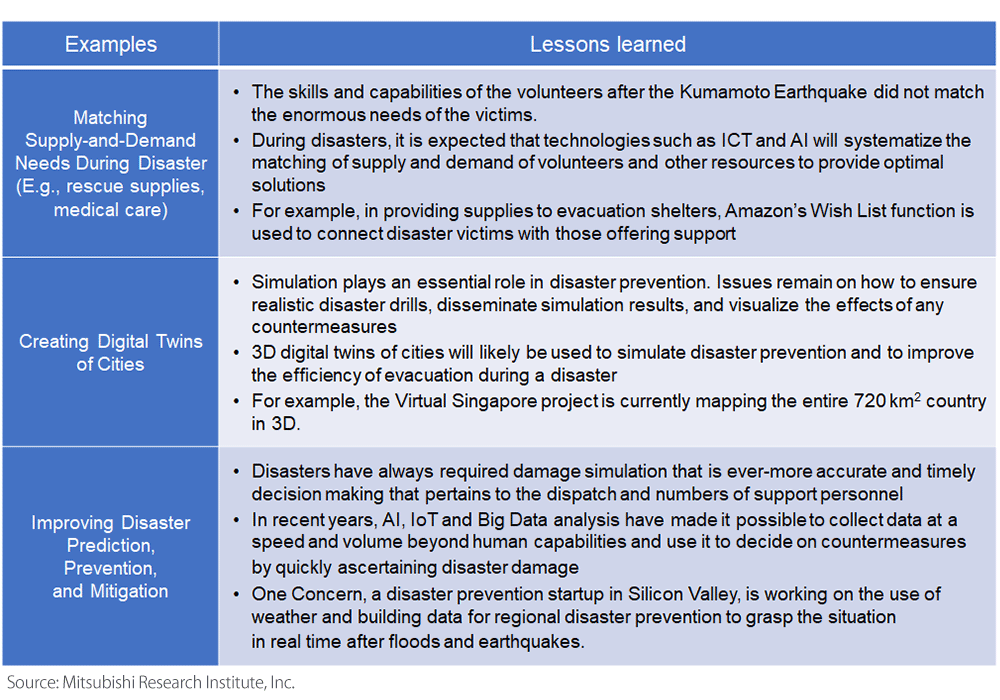The lessons learned from the countless disasters we have experienced have led us to explore, study, and push forward technologies and measures for disaster prevention and mitigation. However, while such measures have already made their way into society, much remains left to do in relation to sustainability—a worldwide theme of discussion.
The 2011 Great East Japan Earthquake, a disaster greater than any of our previous experiences, left us with the scars etched so deeply in our minds that even ten years on we are reminded of the importance of being prepared. Given the current situation, preparation is far from sufficient for overcoming the mega-disasters that await. In fiscal year 2014, the Japanese government set objectives for mitigating the disaster to occur as a result of future Nankai megathrust earthquakes: an 80% cut in the projected 332,000 fatalities; a 50% cut in the projected 2.5 million buildings destroyed. As of 2020, progress remains below half of what was planned to be achieved by this time.
Based on the lessons learned from the Great East Japan Earthquake, the government's Central Disaster Management Council formulated the following policies to promote preparedness and countermeasures assuming disasters at previously unprecedented levels, thus eliminating the unexpected. First, for earthquakes and tsunamis that occur anywhere from every few decades to every few centuries, the council will maintain its “hard measures”1 policy which aims to protect human life and resident property, stabilize local economic activity, and secure effective production bases through measures including construction of coastal-conservation structures. Second, for mega-disasters such as the Great East Japan Earthquake, the council has made a clear shift in policy by adopting an approach combining hard and soft aspects in order to prioritize saving human lives even if property cannot be protected.
Soft measures include realistic drills and raising of awareness for tsunami evacuation. It is crucial to nurture and keep alive the sense of caution instilled across the nation following the Great East Japan Earthquake. However, Japan tends to be reluctant at enacting major change based on past experiences; awareness regarding crises and disaster prevention has gradually dropped with the fading memories of the Hanshin-Awaji Earthquake 26 years ago and the Great East Japan Earthquake 10 years ago.
Japan must make use of those trying experiences to transform its capacity for disaster prevention and mitigation—learning from the lessons before us. In past mega-disasters, we have suffered significant economic damage every time we have failed to secure our industries. Existing technologies had been insufficient for accurate forecasts and proper countermeasures. Even today remains the necessity to foster responsibility among individuals for self-support in ensuring their own safety.
The Great East Japan Earthquake and COVID-19 disasters have taught us that human life is the top priority and that we must also sustain the economy and society as a whole. The Great East Japan Earthquake left about 22,000 people dead or missing as of 1 March 2020 and caused economic damage of about 16.9 trillion yen as estimated by the Cabinet Office; the impact of COVID-19 continues today.

